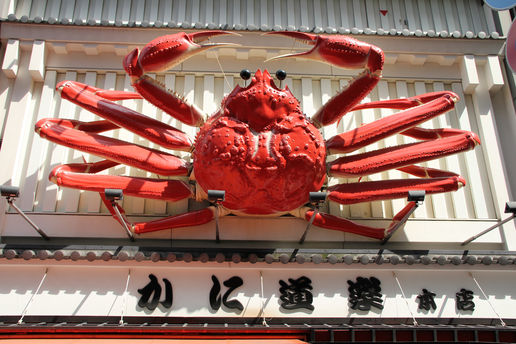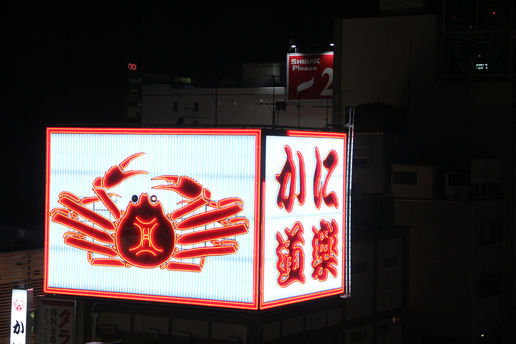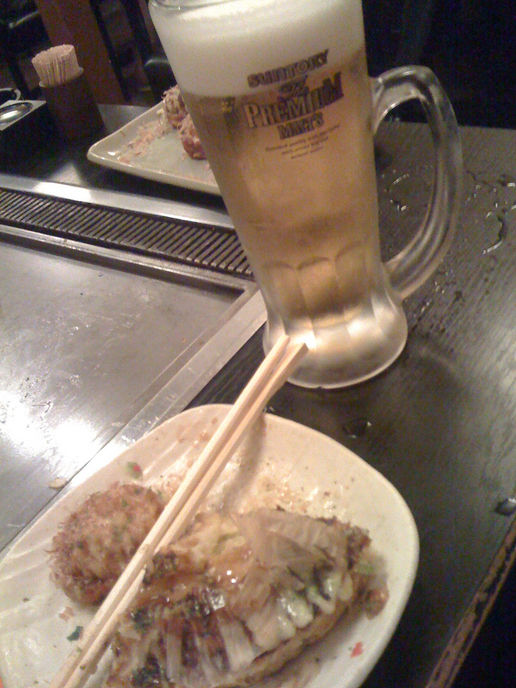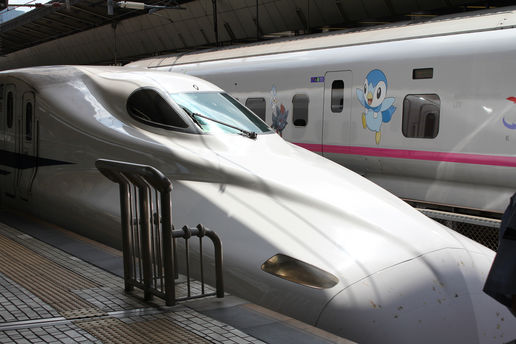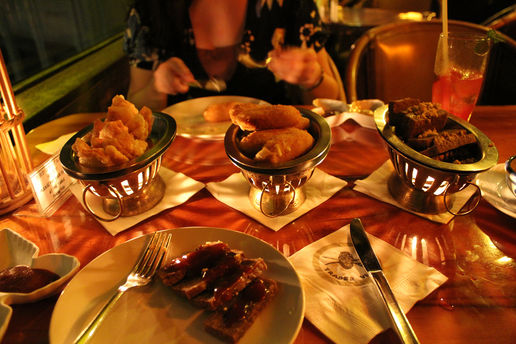Given that I'm many, many weeks behind schedule and that, for some reason, time isn't stopping for me to catch my breath; I present the notes my trip to Japan in the form of short, non-chronological vignettes.
Size
It's hard to capture in photos but Japan loves things in two sizes, gargantuan and minute; and the desire to make one into the other is strong. I contemplated this as we stood outside Shinjuku station, on the side of the road, which was technically three stories above the ground, looking across at a plaza that ended with a large facsimile of the Empire State Building (itself huge, but smaller than the original).
Tokyo is an immense city. It has the highest population of any city at roughly 32,450,000, that's 11,900,000 more than the second biggest city, Seoul. It's also the largest contiguous urban area so the density isn't the highest. But the houses are tiny, averaging just over four rooms and roughly 95m2. All space is utilised.
Everywhere there are tiny three-four car parking lots. I am told later that this is because, if it was an empty lot there would be a higher tax on it than if it was used for something. So the land will be a parking lot for a short time and then a few months later construction will start on a new house.
As we travelled between Osaka and Tokyo we noticed that you don't really ever leave the city. Save for some small mountains that are uninhabitable (rainy valleys that seem to be the setting for almost every Ghibli movie) the city doesn't stop. Houses, roads, and factories all the way.
Back to the centre of the endless city, standing at the famous Shibuya crossing, looking up at the numerous multi-storey video billboards all advertising phones and fragrances and music by bands of perfectly beautiful young men – razor sharp hair and smouldering eyes – and impossibly cute girls – pigtails and pink cheeks – I can't help but think I've been transported to the Neo-Tokyo of countless manga or the ground level of the famous scene from Blade Runner. Neither can any of the tourists around me, they are harder to spot now, the evening has cooled a little and more locals are out shopping and looking for food and entertainment.
The tourists wait for the signal and then film the hundreds of people as they swarm across the junction of four main roads, on the new camera they purchased duty free in Akihabara – on the other side of the circle traced by the Yamanote line. I smile, because we've all done it. There's something about the sheer size of the experience that you feel you have to capture; the fact that you are doing so on a device that is, in many cases, smaller than your hand, is lost in the noise.
For every Godzilla there is a bonsai tree, yet the level of complexity remains the same. Gigantic robots have tiny details etched onto their surface, not the gears, irises, and physically impossible sliding metal of the Transformers' movies, but realistic joints and warning labels ("Do not step here", "Caution: thrusters"). And then there are tiny, models that come in "mystery boxes" that fill aisles at the toy stores; robots, popular cartoons, and doll house-style "meals" with tiny individual grains of rice carved into the plastic pieces of sushi.
The massive road and highway network is packed with tiny cars and improbably tiny trucks and buses, and the tiny streets that wind between the compact houses are filled with giant scooters more reminiscent of large American touring bikes.
Perhaps Japan is a fractal. At every level of magnification it looks the same.
The 5'8" Giant
I'm in a house in suburban Tokyo, a rather affluent part of Shibuya where many of the embassies are. Stand on the street long enough and you'll be passed by the pairs of police who patrol the area on bicycles. We were there with a group of New Zealand businessmen (CEOs and General Managers of some very notable companies) to watch the final game of the Bledisloe Cup that would actually mean anything. And right in the middle of it all was a legend: George Gregan.
He was constantly surrounded by a group of guys keen to catch his ear, ask his opinion of the game, or make some sly remark about the Wallabies. He would answer with a warm smile and maybe a joke. I was able to observe this scene with cold, scientific rigor as I had already geeked out hours earlier at a pub down the road.
I had been invited as the guest of Dave Thomas from adidas Japan to the BBQ hosted by the local head of Tetra Pak. Dave, an Australian, had been invited as the token Aussie and had been ribbing me about the All Blacks since I first contacted him last year. I would describe him as a "Top Bloke" and a hell of a lot of fun.
We sat in The Aldgate (home of a pretty decent music collection as well as a large number of craft beers) discussing how our trip was going and the (not that) crazy adventures we had been up to when Gregan walked in to the bar with teammate Peter Hewat and Hewat's fiancé, Alicia. I shook George's hand and introduced myself.
Then there was a moment, an odd pause where you could see Gregan think about whether or not he actually had to say his name. I mean clearly I know who he is, but it's sort of impolite not say his name. Does George Clooney have to introduce himself? All of this caused only the briefest of pauses before he said "George". I found myself slightly thrown that he didn't say "Gregan".
We were sitting by Pete and Alicia and discussing their wedding plans and the difficulties of living in Japan (mainly not finding western food). We found ourselves bonding over marmite and crackers, where you press them together to get the "worms" coming up through the holes. Pete, like Dave, was one of those incredibly friendly, always smiling Australians; the kind that pat you on the back after your team lose, make a joke, and then buy you a beer.
Then came my moment. Ten minutes with George Gregan in a cab through Shibuya, including a drive through the famous crossing. It was like Lost in Translation but with a world-famous rugby player. We passed a huge yellow billboard and George pointed it out.
"That's one of our biggest selling brands: C.C. Lemon."
By "our" he meant Suntory. The incredibly large beverage company (you may know their whiskey) owns Gregan's team, the Sun Goliaths and if you're part of the team you're part of the company. And if you're a Japanese player that means a job for life.
I'm not sure what I thought Gregan would be like. A cheeky bastard who laughs a lot, a quiet insular guy who doesn't say much, or an arrogant prick. Turns out he's just a guy who actually doesn't talk much about rugby.
Blade Runner
I woke up at 5am in Osaka. Due to our inability to properly negotiate train times we were catching the 7am Shinkansen to Tokyo. I opened the curtains and saw rain. Torrential, vertical rain.
I had never seen rain in Japan before; which seems a stupid thing to mention, except I had been to Japan twice before without seeing rain. Both times were in the stinking armpit of summer when the asphalt and concrete trapped the heat and kept it on the ground, making the humidity unbearable but keeping the rain away. This downpour had been preceded by a week or more of oppressive heat as the typhoon that carried it, made its way over from Korea.
We left Osaka the same way we arrived: driving through the red light district. The bar girls and boys were just heading home. They rode bicycles or walked in pairs chatting about last night's clients. Some just crouched in doorways, smoking and watching the rain and enjoying the cool air it brought with it.
We sat in the warm cab half asleep and still digesting last night's meal: eight courses all made from crab. And probably still recovering from the meal from the night before: takoyaki, okonmiyaki and yaki soba, piled high on a table-top hotplate. Or even our sushi-train lunch, I always pile the plates up.
Osaka is a party town. Eating and drinking in excess is almost part of the city's ethos. The word "kuidaore" – ruining oneself through eating – is not meant as a suggestion.
I spent a week and a half living with a family in Osaka back in the 90s. Beyond the long teenage discussions with my host brothers about Nirvana and other contemporary bands of note, I remember the food. Slabs of toast an inch thick for breakfast, mountains of rice, jugs of beer, plate after plate of sashimi, and enough tempura to kill a grown man. I am sure my memory embellishes.
We arrive in Tokyo and are able to stay underground for our entire trip across the city until we emerge in the metropolitan centre of Shinjuku. Here people are still making their way to work. We would later be told that over four million people use Shinjuku Station every morning and every evening. That blows our mind a little.
When we get to street level – saying ground level isn't correct – all we see are umbrellas. It's like the street has a roof. The crowd effortlessly moves together with no one being hit in the eye or otherwise stabbed, something New Zealanders would do well to learn. We would notice it more in the coming days, the natural flow of the traffic on the footpaths and in the subways. However right now, we were lost.
"Can I help you?" We turned and saw a nice young man with a briefcase and an umbrella. And while I am naturally suspicious of "helpful strangers", I was also keen to get out of the rain. I showed him the map and our hotel on it.
"Ah, yes you're heading the right way but it's just hard to get on the right road", he said and got us to follow him. He was right, we would have been hopelessly lost without his help.
"It's just one block down", then paused and looked thoughtful. "Here, take my umbrella".
"Dude, it's pouring with rain! You'll get soaked"
"It's ok, my office gives us free ones, and you'll need one today". We thanked him profusely and then he walked off into the rain. I realised I forgot to ask his name.
---
Thanks to Asia:New Zealand for all their help on this trip.

